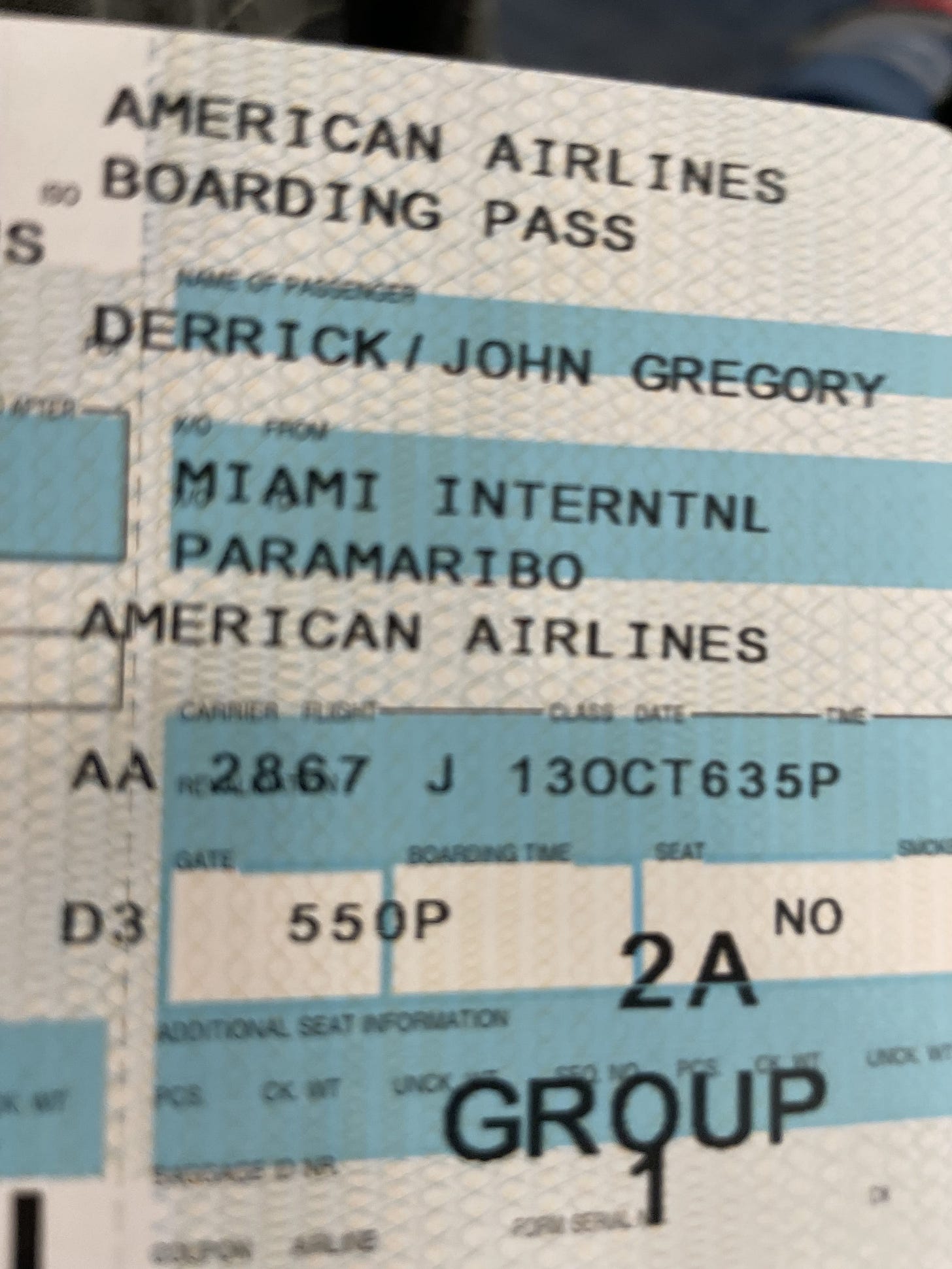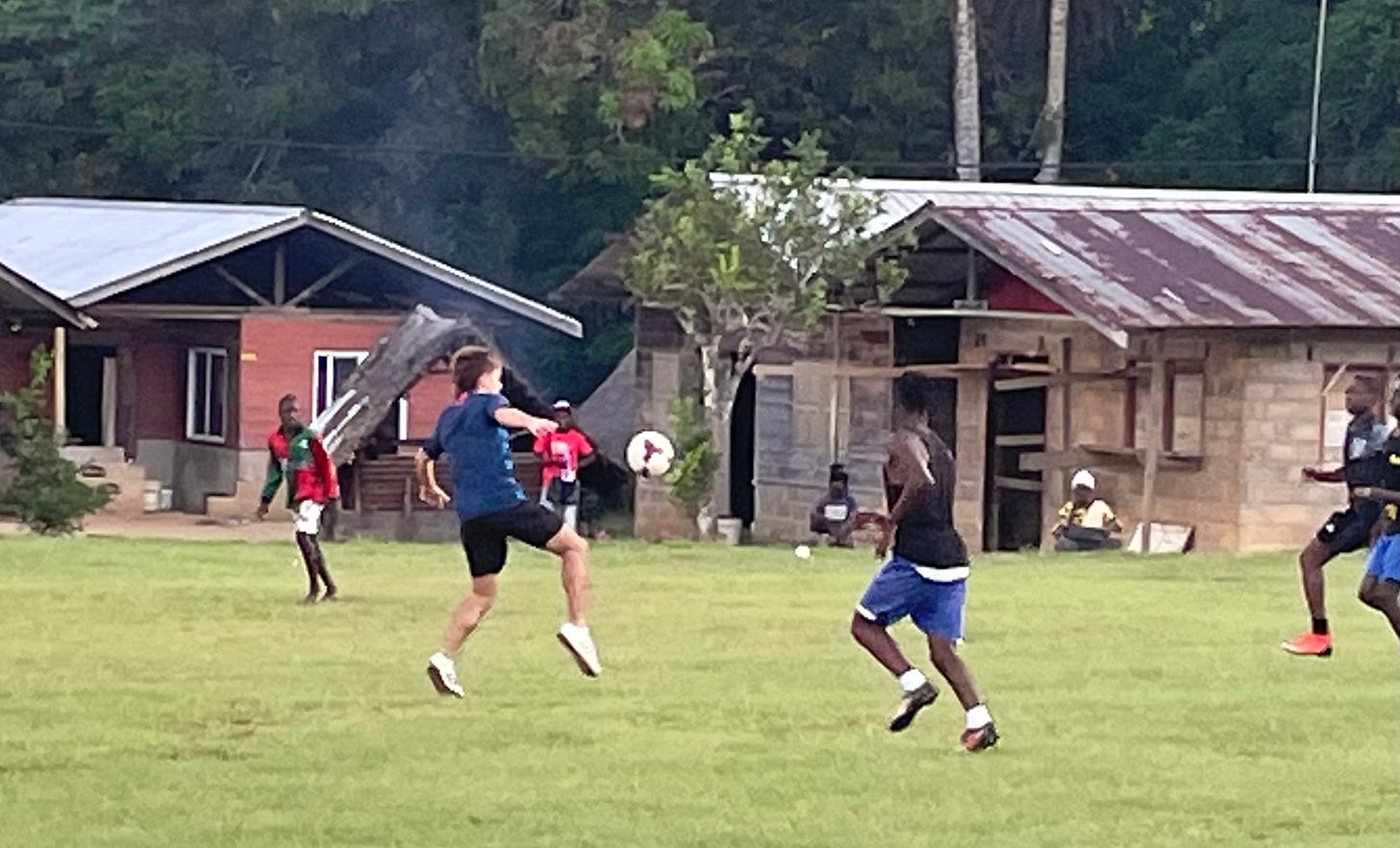Final call for American Airlines to Paramaribo
Suriname: Unspoiled and worth visiting. Plus: MIA’s in-terminal hotel.
I consider myself reasonably skilled at geography. I’m competent at Worldle, the game where you guess the name of the country by its outline. But until recently, I could not have named the capital of Suriname. (Also spelled “Surinam,” but the version with the “e” seems nowadays the official one, although the national airline drops the extra vowel.)
It’s Paramaribo. (Pronounced “Para-mah-ree-bo,” said a bit quickly.)
During the pandemic, airlines started to make route announcements catering to a new world order in which leisure travel would grow at the expense of the business variety and hoards of digital nomads would create a growing type of hybrid traffic.
Among the interesting new routes that came out of this was American’s daily service from Miami to Paramaribo. The was a first by a US airline. And, at the time, the only direct service between the two countries on any airline.
Unfortunately, it did not work out. American will shortly operate its last flight on the route. I’ve sensed American doesn’t always have the staying power that some of its competitors possess to give new routes the time to mature. The route cancellation is sad. It threatened to leave Suriname with no direct flights to the USA, but Surinam Airways has now stepped in with its own nonstop to Miami.
Fortunately, I got to take AA to Paramaribo not long ago. It was almost by accident. My wife and I were planning on going with our son — a college freshman in Miami — to Medellin when he had a long weekend in October. But we were traveling standby and the loads, which seemed promising at the start of the week, began to look the opposite as the day of departure neared.
We were staying at the hotel built right into the Miami airport, the Miami International Airport Hotel or “Hotel MIA” as people often call it. That hotel goes deep into my travel DNA and, indeed, marriage. I met my wife in Florida in the late eighties and we would sometimes stay there as we came and went.
The hotel is not what it was since they closed the roof terrace during the pandemic, never — it seems — to reopen. (One would think the pandemic was a time to cherish outdoor spaces, but whatever.) And it is a bit shabby and past its prime (possibly with a limited lifespan due to airport redevelopment plans). But it has a certain atmosphere. And, as an airport junkie, I like hotels built into terminals and wish there were more of them. The hotel is still worth a stay if you get into MIA late at night or have to depart early. The check-in, set in an open area of the terminal, is a bit like an airline check-in counter and you then take an elevator up to the rooms and bar/restaurant. Make sure you get a room with a runway view (although the views would improve if they did a better job of keeping the windows clean).
Anyway, sitting in the bar of the hotel, we finally made the no-go decision the night before we were due to go to Medellin. Rather than standby and probably not get on, we’d instead find some destination where the loads were good. And there were a lot of seats open to Paramaribo. So much so that all three of us ended up in First Class. That may have been the problem with the route from AA’s perspective.
Suriname is the smallest country in South America both in terms of population and landmass. If you get a chance to go there, I recommend it. It is a former Dutch colony — it used to be known as Dutch Guiana — and ties between it and Holland are still quite tight. Both KLM and Surinam Airways fly between Paramaribo and Amsterdam.
The flight from Miami takes about four hours and 45 minutes, not long to get to a place that feels so far away. The Paramaribo airport is a long way from the city itself. It’s about an hour-long drive. Arriving, it seems in the middle of nowhere. The odd placement dates back to World War Two, when the Americans built a runway when they took over protecting the bauxite (aluminum) mines for the Dutch government in exile, building on a smaller airstrip used by Pan Am to deliver mail.
Paramaribo is easy to explore on foot. It’s not quite on the coast, but rather on an estuary. There are pleasant waterside places to eat and grab a drink. A beer will set you back a couple of dollars. The Dutch influence is still quite marked on the streets. While English is quite widely spoken, Dutch is the main language. Heineken own the local brewery. There aren’t many tourists, but most of those who come fly in from Holland.
Suriname is a very diverse country. I read somewhere it has the most diverse demographics in the world in terms of national and racial origin. I’m not sure whether that’s true, but I wouldn’t be surprised. Before abolition, there was a major migration of escaping African slaves into the jungle, who formed a presence known as the Maroons. They partly mixed with indigenous tribes and formed a bit of a buffer between them and the settlers. Paramaribo today has a Caribbean feel. But there is definite South and South East Asian influence, a legacy of when, following the end of the African slave trade, the Dutch shipped in indentured workers for sugar plantations from Indonesia, another of its colonies, as well as from India and elsewhere. There is also a Korean influence. The Suriname government was upset recently about the portrayal of the country in a Netflix series about a Korean drug lord.
As well as being one of the most ethnically diverse countries on earth, Suriname is among the least densely populated. This is because much of it is jungle (with a low rate of deforestation).
After a couple of nights in Paramaribo, we headed down into the jungle to overnight at a lodge, which we reached after several hours by road and an hour on a river boat.
I’ve done jungle visits of this sort in a bunch of places and they tend to lead to the inevitable soft pressure to buy handicrafts, etc., from villagers. We did visit a village not far from our lodge in the Suriname jungle, which — like the lodge itself — was accessible only by boat. But what was truly remarkable was that there was not even an opportunity — let alone pressure — to buy anything. You see, Surinam is largely unspoiled by tourism.
Even though American is no longer going to fly there, I think Suriname is worth a visit. The fact that it is a bit hard to get to — even though close to the USA — may keep it unspoiled.
Consider also visiting its coastal neighbors — French Guiana, still a colony, to the east, and Guyana, once a British colony, to the west. I hope to get to those places before long. But I suspect it won’t be on American. ✈️
Related post: American Airlines campus tour.


